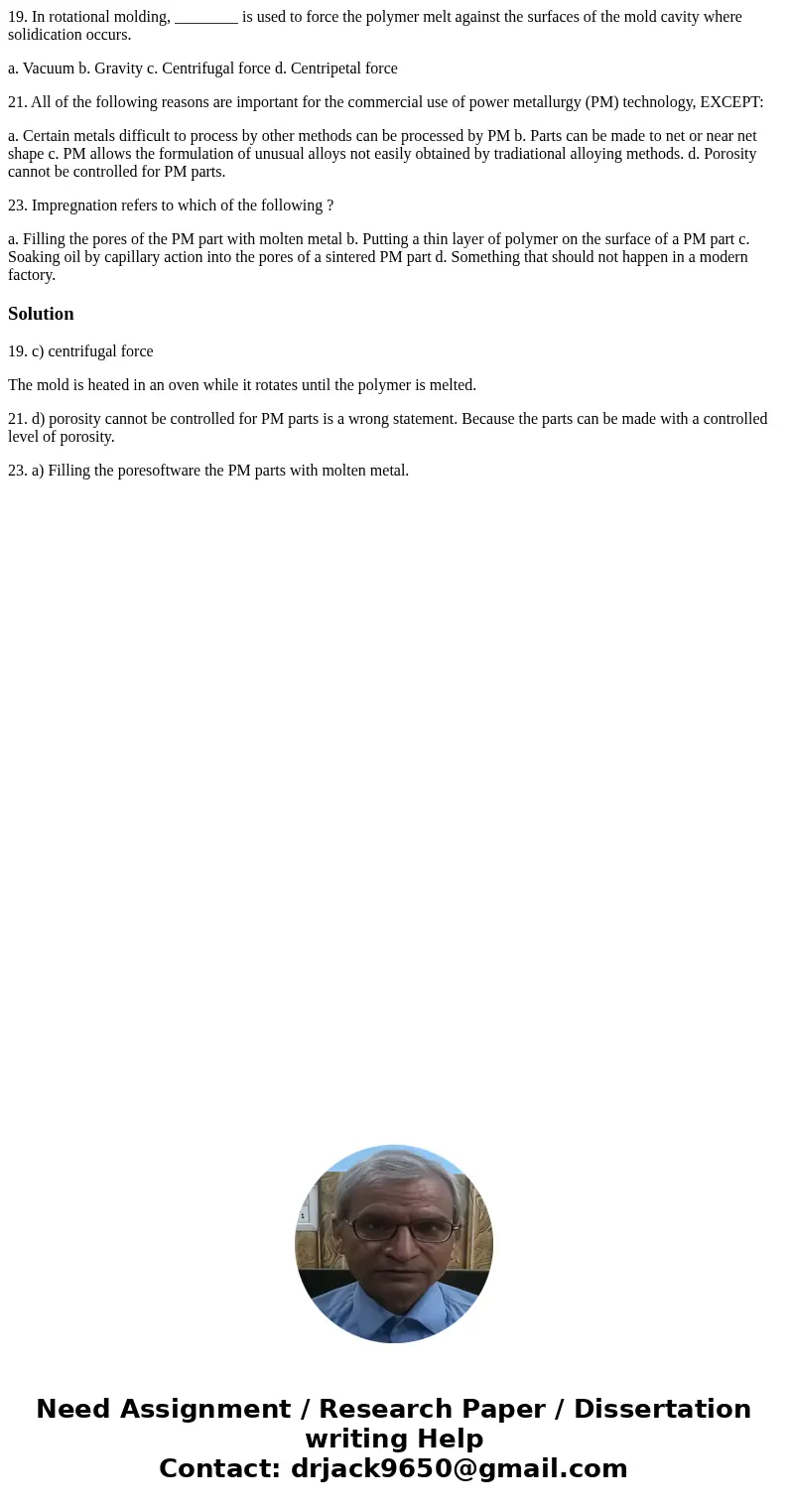19 In rotational molding is used to force the polymer melt
19. In rotational molding, ________ is used to force the polymer melt against the surfaces of the mold cavity where solidication occurs.
a. Vacuum b. Gravity c. Centrifugal force d. Centripetal force
21. All of the following reasons are important for the commercial use of power metallurgy (PM) technology, EXCEPT:
a. Certain metals difficult to process by other methods can be processed by PM b. Parts can be made to net or near net shape c. PM allows the formulation of unusual alloys not easily obtained by tradiational alloying methods. d. Porosity cannot be controlled for PM parts.
23. Impregnation refers to which of the following ?
a. Filling the pores of the PM part with molten metal b. Putting a thin layer of polymer on the surface of a PM part c. Soaking oil by capillary action into the pores of a sintered PM part d. Something that should not happen in a modern factory.
Solution
19. c) centrifugal force
The mold is heated in an oven while it rotates until the polymer is melted.
21. d) porosity cannot be controlled for PM parts is a wrong statement. Because the parts can be made with a controlled level of porosity.
23. a) Filling the poresoftware the PM parts with molten metal.

 Homework Sourse
Homework Sourse